Adventures in Strange Lands
In 1954 I was working in Greenland at an Air Force base called Sondre Stromfjord. Built during World War II it was given the code designator “BLUIE WEST EIGHT or BW-8” The base was about a hundred miles up a long, deep fjord on the western (Baffin Bay) side of Greenland. The airstrip itself was on a long, flat rock at the bottom of the fjord with the river from the glacier running along one side. The glacier face was about a mile farther up the fjord from the airbase.
One day a trio of us engineers decided to follow the river up to the glacier face. Here the river of ice melt coming out from under the glacier was a very broad but shallow stream anywhere from a 2 ft deep torrent to a hundred foot wide, 2 inch deep trickle through a field of 6 inch boulders. In some places there were huge boulders which probably hadn’t moved in a thousand years.
Their surfaces were sculpted and carved into waves and potholes. All it took was a pebble or two spinning around in the current for, say, a hundred years and all of a sudden you had a pothole big enough for a man to hide in.
We worked our way slowly from boulder to gravel deposit marveling at how well the flow had so neatly sorted the surface into sand piles, half inch pebbles, 1 inch pebbles, 2 inch rocks, etc. Then we were on ice, maybe a foot or two thick with the river surging beneath us. We followed this ice path for maybe a quarter mile and came upon this amazing structure, a glacier cave.
It looked like a huge bubble of ice, frozen in time, some 12 feet high and maybe 25 feet across. We just had to find out what was inside! We attacked one large crack with the ice axes we all carried and soon one of the Airmen (I don’t remember names) squeezed inside.
He took my picture as I crawled, head first, through our entry hole.
The inside of the glacier cave was huge. About 2 inches of river water covered most of the floor.
An ice covered rock stood in the middle. The surface water wasn’t moving and under the surface water was a solid ice floor. Walls were 2 ft thick and everything seemed rather solid and stable. The only hint of trouble was the drum, drum of the glacier river as it flowed violently along under the floor.
A few days later I revisited the glacier cave with some other men. It was gone!
The ice floor we had stood on was now a raging torrent of glacier melt. What if??? What if we had been inside when it collapsed? Did we cause the collapse by relieving the inside air pressure when we made our entry hole? Was this a common event? I never saw another in the two years I was in the Arctic.
Did you enjoy this post? Why not leave a comment below and continue the conversation, or subscribe to my feed and get articles like this delivered automatically to your feed reader.

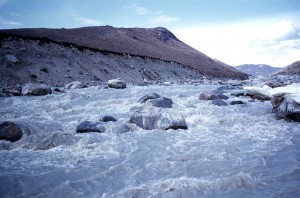

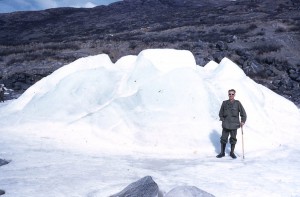
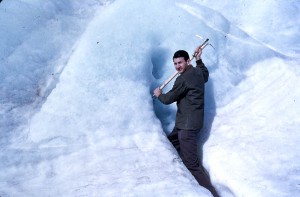

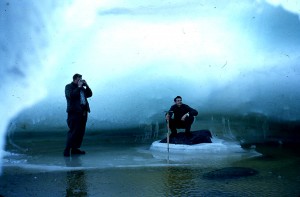
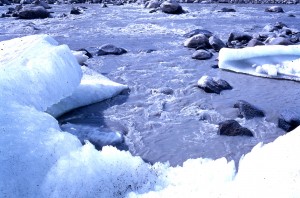
Comments
No comments yet.
Sorry, the comment form is closed at this time.